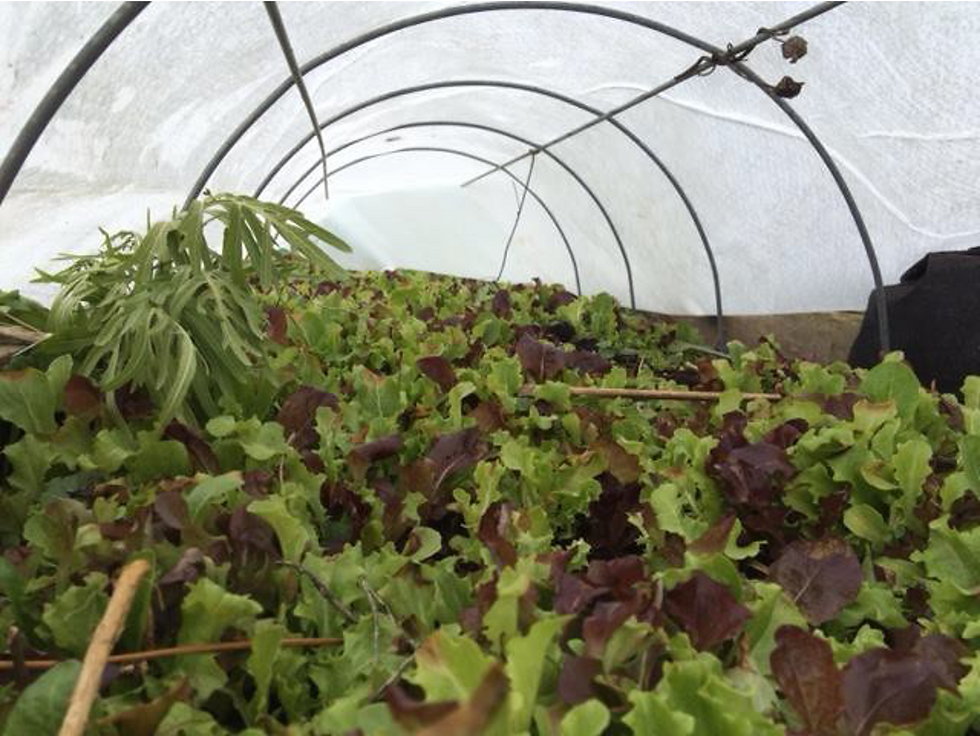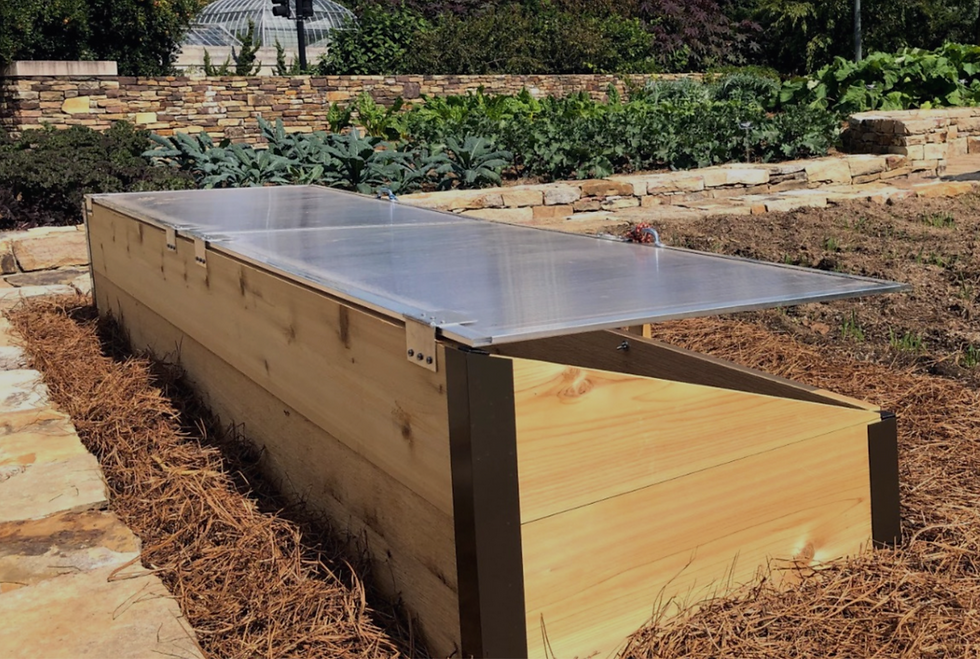Extending your growing season into winter
- Jim Howland
- Oct 17, 2022
- 2 min read
by Jim Howland, lifetime gardener and technical education teacher at Falls Church High School. His engineering students will start designing and building a new greenhouse for the school in November. No kit allowed!
When it comes to vegetable and flower gardening, our local weather patterns are quite suitable for fall and winter gardening. Winter lows range from 32F to 45F with occasional cold continental arctic air lowering it to +20F to 0F or so. The garden soil can freeze 3 or 4 inches deep for short periods, but the usual winters are not severe enough to damage carefully mulched or covered winter vegetable plants.
The key to successful winter gardening is knowing the average date of the first killing frost in your area (mid-November is the typical date in Fairfax County). Installing low tunnels with anti-frost, non-woven grow covers lessens the impact of light frosts, keeps in daytime heat absorbed by the soil, and extends the growing of many salad vegetables into late December -- or beyond.

The author has used half a tomato cage to create hoops for raised bed cover.
Several products are available to support your plants in the coldest times of the year:
Ventilated cloth and fabric tunnels. The advent of low-cost fabrics have made these very common in the past decade. Used by commercial growers to extend the spring and fall growing seasons, short rolls of this fabric and hoops made from heavy gauge wire or conduit make for efficient covers that allow sun and rain to permaeate. In the photo above is mine with a megasize half tomato cage that fits perfectly across my raised bed for a fall lettuce mixture!
Cloches. Cloches provide an elevated warm climate around your winter row crops. They can best be described as portable greenhouses of various designs that work with solar energy to warm the immediate row or plant they are placed over. Many designs have been tried, with ideas ranging from very stiff wire frames holding glass panes to clear gallon-sized plastic bleach, milk or soda bottles with their bottoms removed.
All cloches have two drawbacks to consider: 1) On bright sunny winter days, they have to be manually ventilated to prevent excessive heat buildup. 2) Poorly constructed or "staked-down" cloches can become kites during winter windstorms.
Cold frames. Cold frames are permanent structures that considerably lengthen the growing season. They are an excellent way to grow fall and winter crops. Cold frames provide protection from strong winds, elevate the daily and nighttime temperatures around the plants, and protect frost-sensitive vegetables or flowers. They're easy to build and the vegetables and flowers in them will require minimal care. In short season areas, a cold frame will allow you to start seeds up to 8 weeks earlier than you can outdoors. However, like cloches, you'll need to keep an eye on the temperatures inside the frame and open for ventilation if the heat gets too high.

Here's an example of a cold frame, as featured in HOH's interview with US Botanic Garden vegetable gardener Thomas Crawley. That post includes more information about cold frames.




Such a well-thought-out piece! I appreciate your perspective and the detail you went into. Posts like this keep me coming back to BTC price—keep up the excellent work!